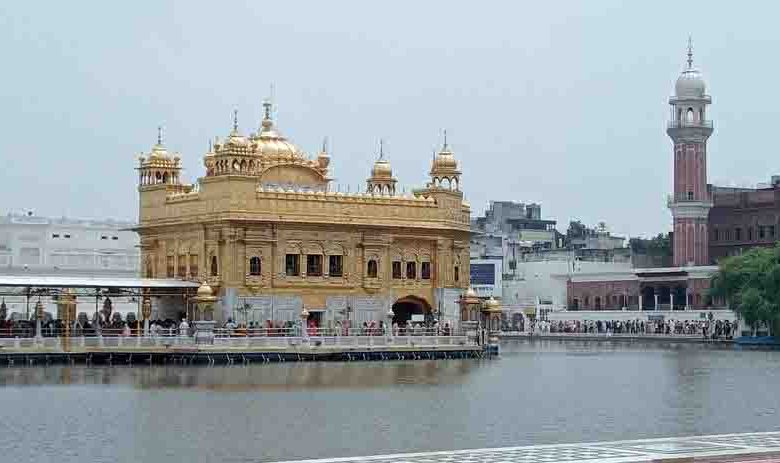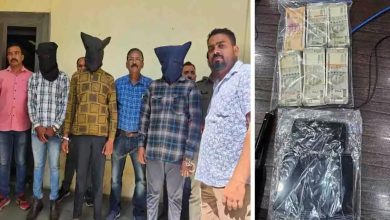Punjab: How the areas around the Golden Temple have changed over the years

Punjab: The directions by the local bodies department to regulate the construction of high-rise buildings around the Golden Temple are virtually an admission by the authorities that in the last few years, the area around it has undergone a sea change that needs immediate redressal. In violation of national and international norms pertaining to historical monuments, contemporary modern structures have come up, drastically changing the skyline around the 450-year-old Sikh shrine. A comparison of photographs of old paintings and current images of the shrine clearly shows the difference between the original and the present form.
Changing skyline
Over the years, professionals engaged in the development of the area around the Sikh shrine have not bothered to refer to Chapter-12 of the 1988 report of the National Urbanisation Commission, which mentions certain guidelines for the maintenance of historical monuments. It clearly states that old cities were not designed for automobile traffic. However, over the years, road widening and beautification schemes, such as the access road project, elevated road project, corridor plan and Golden Temple entrance, have caused extensive damage to the traditional look of the historic walled city. Going a step further, spatial conservation planner Dr Balwinder Singh, former head of Guru Ram Dass School of Planning, Guru Nanak Dev University (GNDU), said several commercial structures have come up around the Golden Temple, which have changed its skyline forever. The area was once a hub of rich Sikh architecture. However, incongruous interventions have altered the surroundings of the Darbar Sahib. An overhead water tank was demolished several years ago, citing an “incongruous skyline” near the Golden Temple complex.
However, later the authorities let their guard down and several new buildings, including glass structures, came up, defeating the very purpose of the entire process. Recently, Local Bodies Minister Dr Ravjot Singh in a release referred to the buildings that are obstructing the skyline of the Walled City in general and the Golden Temple area in particular. The construction of these structures should be reviewed as per the already prescribed bye-laws of this specific area. If there is any violation of the bye-laws, strict action will be taken against the violators. He also sought an action taken report in the matter within a week. Conservationists feel that these directions have come too late as contemporary modern structures have already come up in the narrow winding lanes of the Walled City. They feel that the bye-laws of the Walled City, including the surroundings of the Golden Temple complex, should be reviewed. They did not like the change in land use from residential to commercial. Though a lot of damage has already been done, many areas around Katra Ahluwalia, Chowk Baba Sahib, Bazaar Kesaria, Pratap Bazaar and Baba Atal have retained their original character. The area around the holiest Sikh shrine is surrounded by open spaces and traditional wells, all features that are seen in any city whose history dates back to the medieval or ancient period.
Changes through the ages
This holy city has seen many ups and downs in its physical development in its history. Initially, it was a victim of Mughal rulers, but the period of the Sikh Misls from 1765 to 1802 is considered favourable for its development. Many areas still bear the memories of the Sikh Misls, who played a significant role in the establishment of many Katras. Many areas of the walled city are popular by the names of the Misls such as Katra Dal Singh, Katra Charat Singh, Qila Bhangiya and Qila Ahluwalia. During this period, various Akharas (learning centres), Bungas (rest houses), Havelis (courtyard houses), forts and gardens were developed. It is noteworthy that the names of the garden areas such as Bagh Ramanand, Havelis and Qila are still in common use, but due to rampant commercialization and ignorance of history, these structures are no longer visible. The period of the great Sikh Maharaja Ranjit Singh from 1802-49 is considered to be the golden period of the physical development of this holy city. It was during this period that a wall with 12 gates was built around the city, a fort named after Guru Gobind Singh was strengthened and a beautiful garden based on the Shalimar Bagh of Lahore was built in the name of Guru Ramdas, the founder of the city. Subsequently, decorative and architectural elements were added in the form of murals and other decorative elements, but now these are hardly visible in the walled part of it. It was during this period that Sri Harmandir Sahib was decorated with murals and other artworks, such as tukri, inlay stones, moharakashi, gold carvings, etc.





